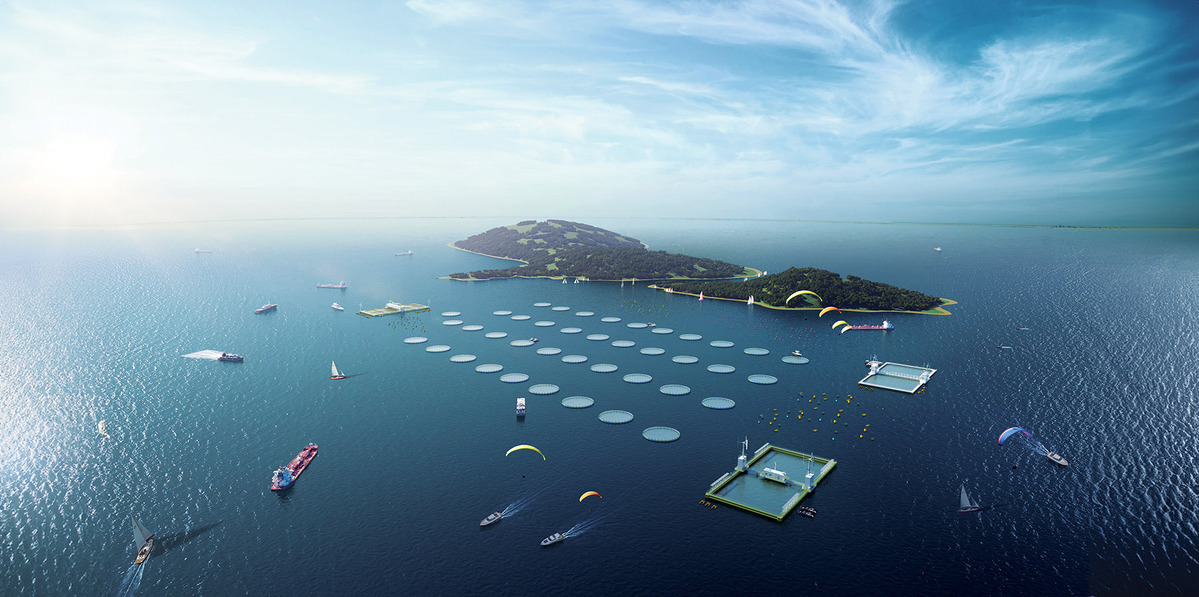By Shi Yu, People’s Daily
“Quick, quick, quick, it’s up!” With a burst of cheers, Pu, a tourist from south China’s Guangdong province, swiftly scooped up a freshly caught onespot seaperch with a net.
Pu, along with other tourists, was enjoying a sea fishing experience on an oyster farming raft owned by Xu Meizhen, a resident of Xiaxikeng village, located in the waters off Qianlou township, Dongshan county, Zhangzhou, southeast China’s Fujian province.
“This place is near the sea and the environment is beautiful. There are so many fun activities. It’s worth every bit!” said Pu, who’s a fishing enthusiast living in Guangzhou, capital of Guangdong province.
Staying at Xu’s B&B hotel, he was taken by Xu together with other guests to join various seaside activities, including fishing, oyster harvesting, and fish net-making, to experience the lifestyle of local fishermen.
Nestled amid mountains and the sea, Xiaxikeng village boasts picturesque scenery.
“We were fully booked all summer, and business is still quite good now,” said Xu, who began running the B&B business in 2019 using her vacant rooms. In recent years, her business has been thriving. “Our village has broad sea and clear waters. Who wouldn’t love it?” she said.
However, a few years ago, the waters around Xiaxikeng village were plagued by pollution from aquaculture. “The water was murky, and a strong fishy smell lingered near the shore,” recalled Shen Haochao, deputy mayor of Qianlou township.
Only pristine water attracts tourists. Starting in 2020, Xiaxikeng village has moved the coastal aquaculture zone 800 meters further offshore and reduced the density of aquaculture activities. Besides, villagers also replaced foam buoys with plastic ones to reduce marine litter.
Embracing the change, Xu upgraded her oyster and seaweed farming facilities in 2022.
“Gracilaria farming doesn’t require feed, and it can even fix carbon dioxide. Xiaxikeng village produces over 100,000 tons of Gracilaria annually, which earns villagers not only money but also carbon credits,” Shen explained.
According to estimation on the village’s annual carbon sequestration capacity, the village can generate a potential carbon trading volume of 946,000 yuan ($132,827). In 2023, the village sold 420,000 yuan worth of “blue carbon” credits.
“Some of the revenue from carbon credits goes toward collecting marine litter to maintain our ecological environment,” Shen said.
Thanks to the joint efforts of local officials and residents, aquaculture zoning has improved, and the marine environment has noticeably brightened. During the peak tourist season from June to October, Xu is always busy with her B&B business, while from October to May, she focuses on aquaculture.
“In the past, I could only earn money for half a year, but now I have work and income year-round,” she said, smiling.
Like Xu Meizhen, fellow villager Xu Yanfeng also offers a variety of marine experiences on his leisure fishing raft. “Visitors can enjoy over 10 activities such as speedboating, night fishing and crab trapping. Fishing on the raft and eating your catch right away is very popular,” Xu Yanfeng said.
In the past two years, Xiaxikeng village has welcomed nearly 500,000 tourists annually, generating over 20 million yuan in tourism revenue, according to Xu Guixi, the Party chief of the village.
To further enhance collaborative marine management, Qianlou township has made Xiaxikeng village a central hub, partnering with neighboring Dingshang and Yecuo villages to establish an inter-village committee, Shen Haochao told People’s Daily. Addressing environmental issues by dividing the area into distinct zones, the committee aims to further improve the marine ecological environment.
Besides, the villages have invested capital, assets, and resources in programs that integrate fishery and tourism, so as to further increase the income for villagers.
